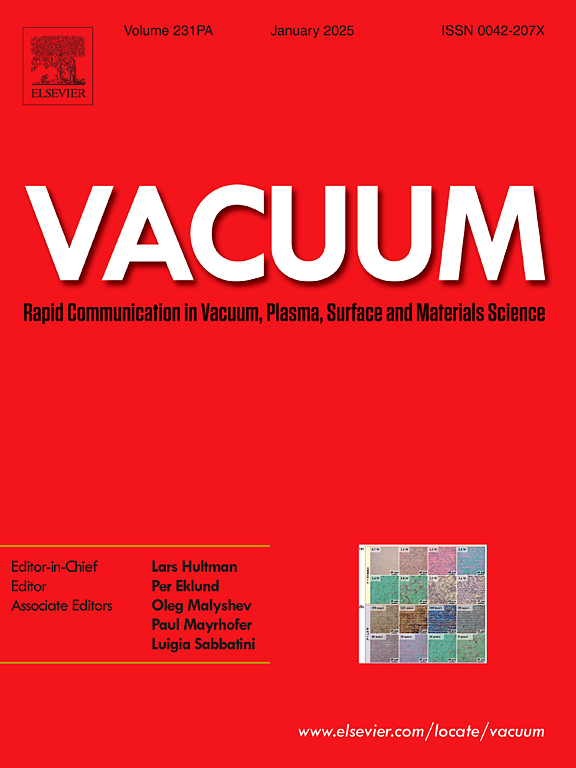Enhancement of surface quality and corrosion resistance in 321 stainless steel by electrochemical machining
IF 3.8
2区 材料科学
Q2 MATERIALS SCIENCE, MULTIDISCIPLINARY
引用次数: 0
Abstract
Electrochemical machining technology was applied to treat the surface of 321 stainless steel. The surface roughness values were measured and the surface morphologies were observed. The corrosion resistance of the samples was compared before and after electrochemical machining treatment. The characteristics and composition of the passive films were detected. The results showed that electrochemical machining was beneficial for obtaining high-quality surfaces. Following a processing time of 15min, the surface roughness reached 0.24 μm. The outcomes of the corrosion resistance tests demonstrated that the mechanically machined sample was severely corroded, whereas the sample subjected to electrochemical machining experienced little obvious macroscopic corrosion. The electrochemical treatment increased the corrosion potential and decreased the corrosion current density in the polarization curve of 321 stainless steel. The high-resolution projective electron microscopy results indicated that there existed amorphous passive films on the sample surface and the thickness of the passivation layers increased due to electrochemical machining. By X-ray photoelectron spectroscopy, following electrochemical machining, there was a notable enrichment of chromium compounds in the passive films and the ratio of Cr2O3/Cr(OH)3 increased. The dense Cr2O3 component played a dominant role and served to stabilize the passive films, thereby enhancing the corrosion resistance of 321 stainless steel.
电化学加工提高321不锈钢表面质量和耐蚀性
采用电化学加工技术对321不锈钢进行表面处理。测量了表面粗糙度值,观察了表面形貌。比较了电解加工前后样品的耐蚀性。对钝化膜的特性和组成进行了检测。结果表明,电化学加工有利于获得高质量的表面。加工时间为15min后,表面粗糙度达到0.24 μm。耐蚀试验结果表明,机械加工后的试样腐蚀严重,而电化学加工后的试样宏观腐蚀不明显。电化学处理提高了321不锈钢的腐蚀电位,降低了腐蚀电流密度。高分辨率投影电镜结果表明,样品表面存在非晶态钝化膜,电化学加工增加了钝化层的厚度。通过x射线光电子能谱分析,电化学加工后钝化膜中铬化合物明显富集,Cr2O3/Cr(OH)3比值增大。致密的Cr2O3组分起主导作用,起到稳定钝化膜的作用,从而提高了321不锈钢的耐蚀性。
本文章由计算机程序翻译,如有差异,请以英文原文为准。
求助全文
约1分钟内获得全文
求助全文
来源期刊

Vacuum
工程技术-材料科学:综合
CiteScore
6.80
自引率
17.50%
发文量
0
审稿时长
34 days
期刊介绍:
Vacuum is an international rapid publications journal with a focus on short communication. All papers are peer-reviewed, with the review process for short communication geared towards very fast turnaround times. The journal also published full research papers, thematic issues and selected papers from leading conferences.
A report in Vacuum should represent a major advance in an area that involves a controlled environment at pressures of one atmosphere or below.
The scope of the journal includes:
1. Vacuum; original developments in vacuum pumping and instrumentation, vacuum measurement, vacuum gas dynamics, gas-surface interactions, surface treatment for UHV applications and low outgassing, vacuum melting, sintering, and vacuum metrology. Technology and solutions for large-scale facilities (e.g., particle accelerators and fusion devices). New instrumentation ( e.g., detectors and electron microscopes).
2. Plasma science; advances in PVD, CVD, plasma-assisted CVD, ion sources, deposition processes and analysis.
3. Surface science; surface engineering, surface chemistry, surface analysis, crystal growth, ion-surface interactions and etching, nanometer-scale processing, surface modification.
4. Materials science; novel functional or structural materials. Metals, ceramics, and polymers. Experiments, simulations, and modelling for understanding structure-property relationships. Thin films and coatings. Nanostructures and ion implantation.
 求助内容:
求助内容: 应助结果提醒方式:
应助结果提醒方式:


